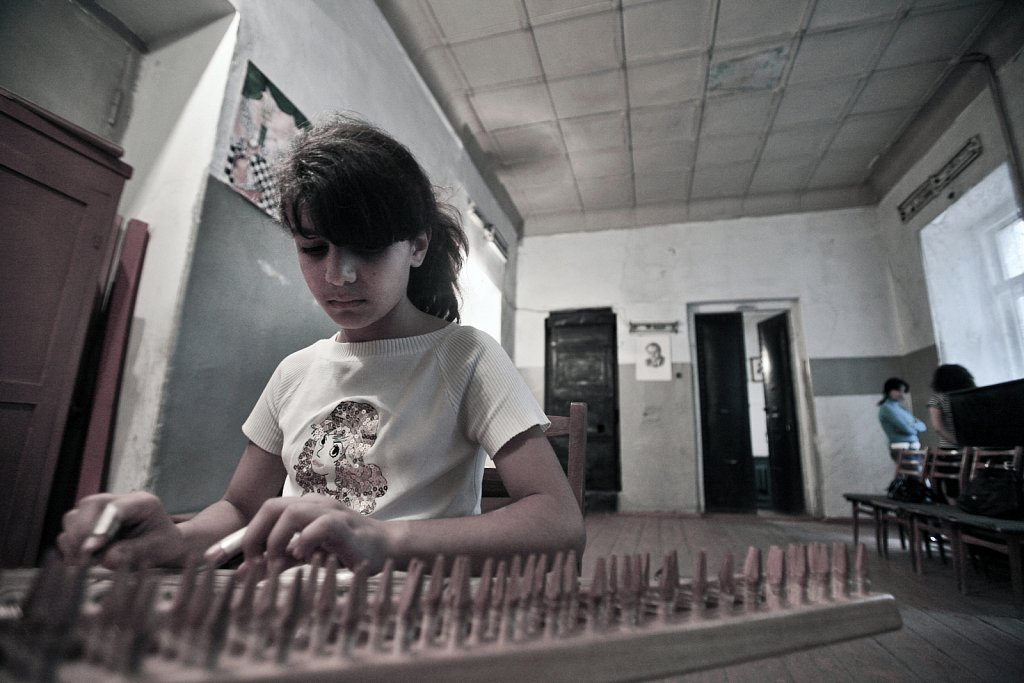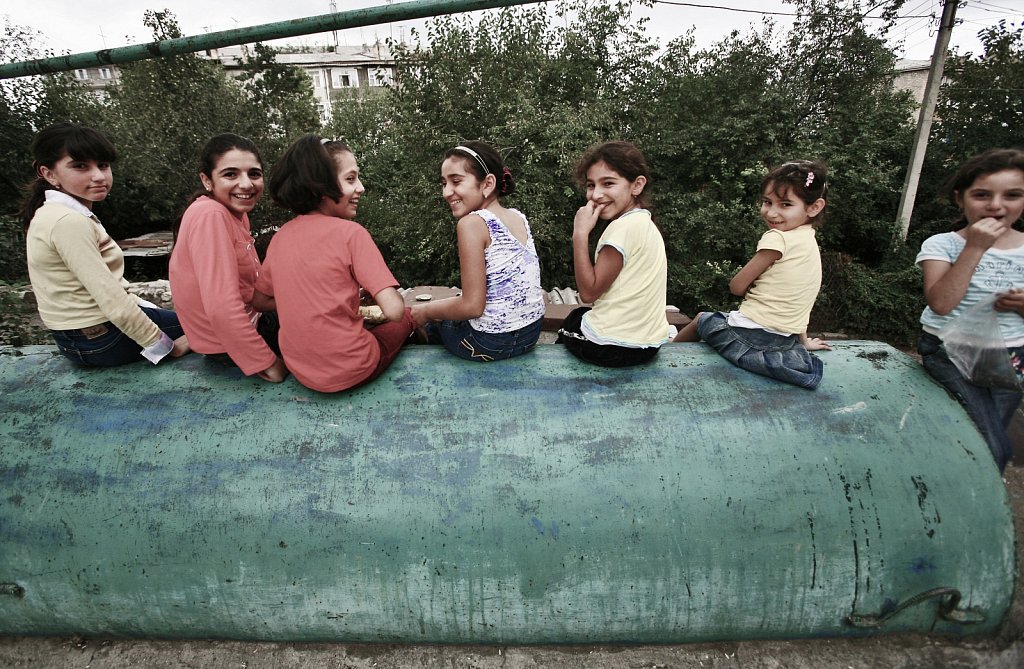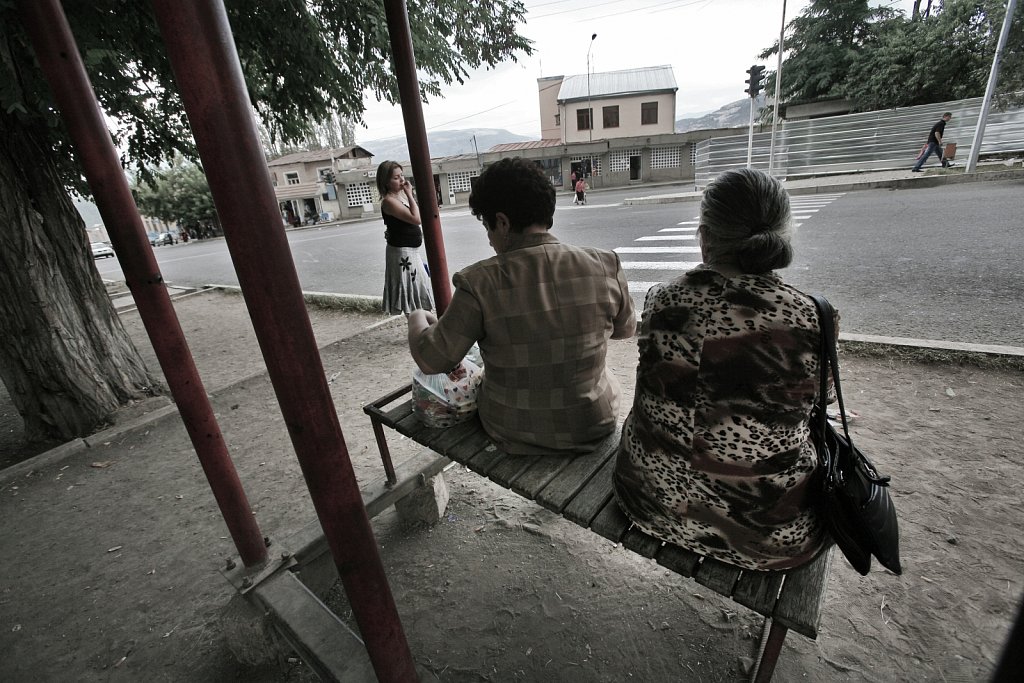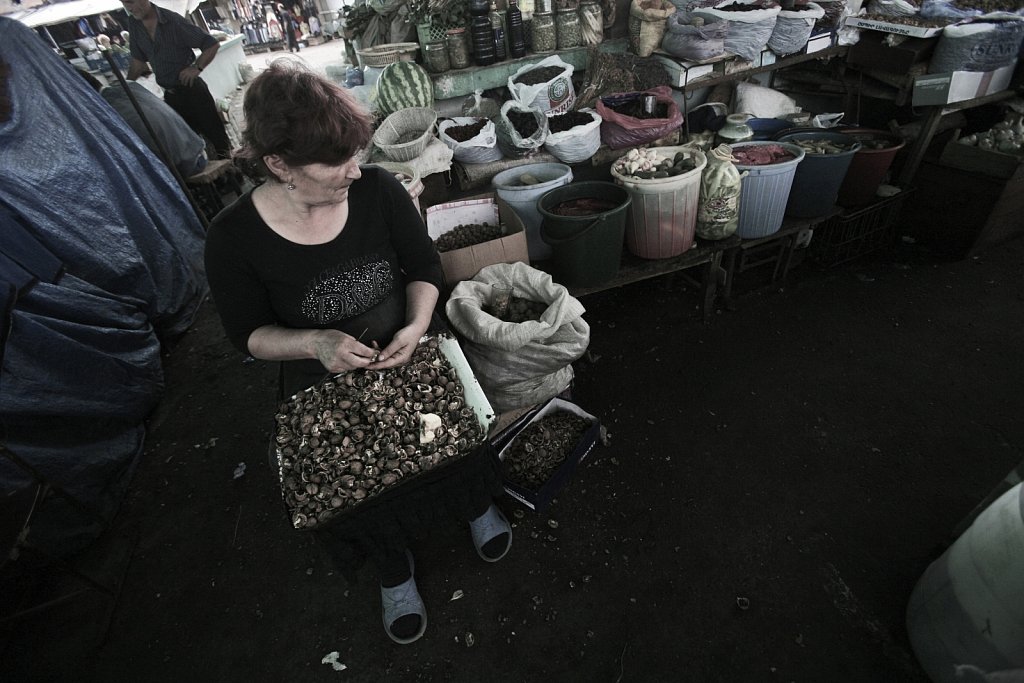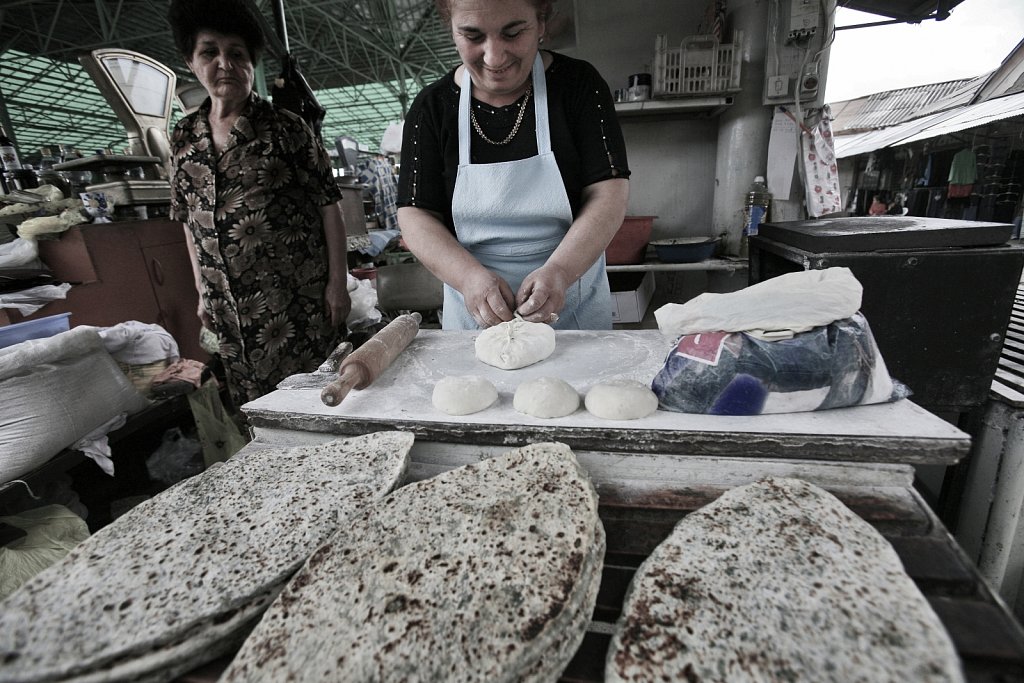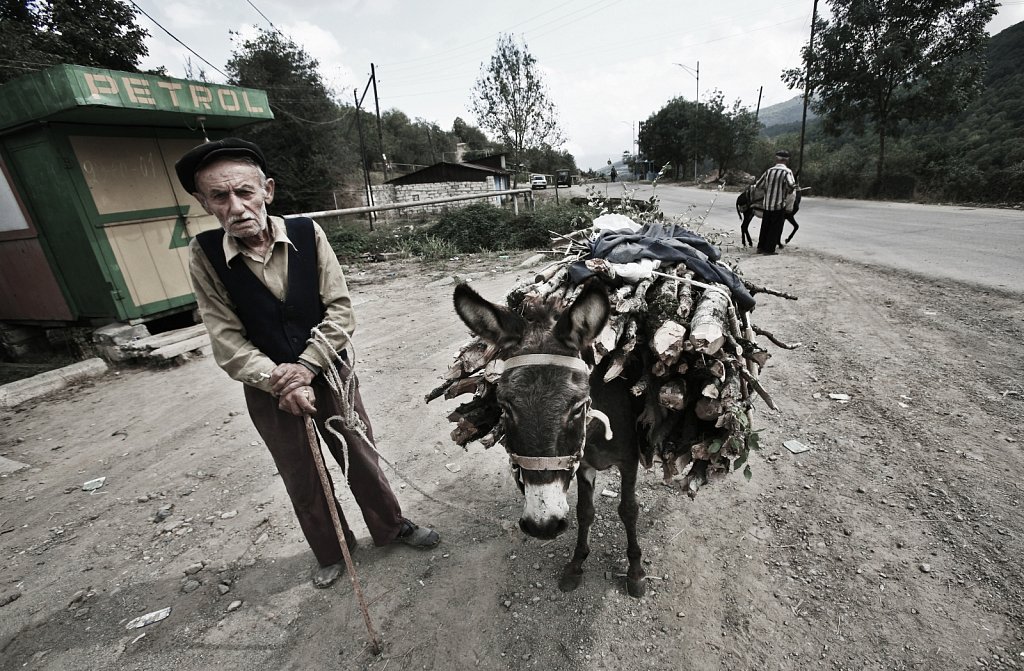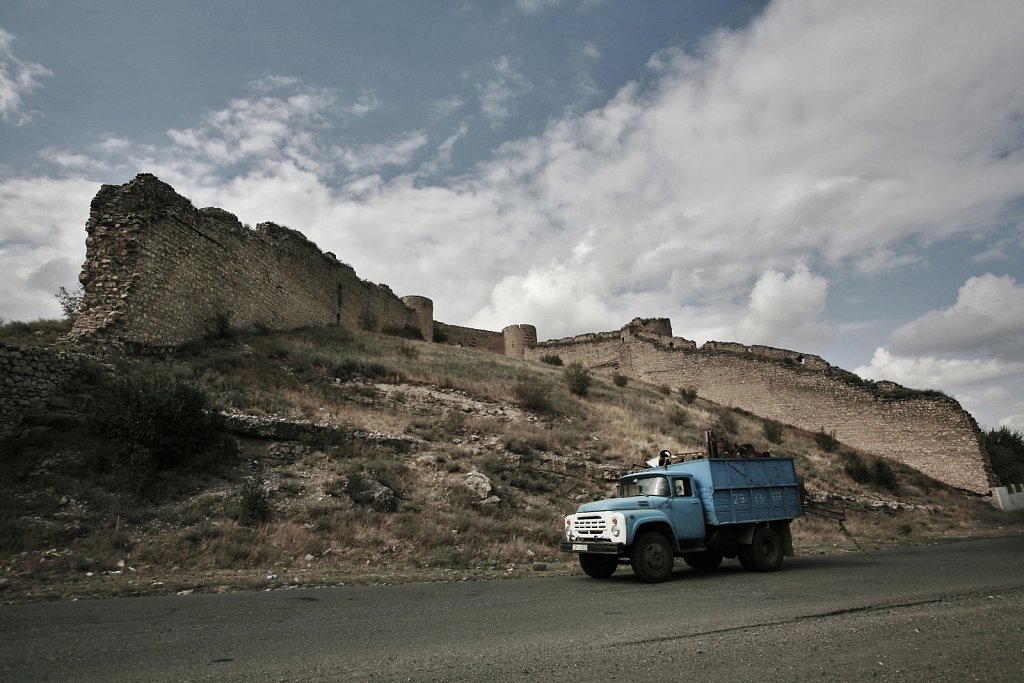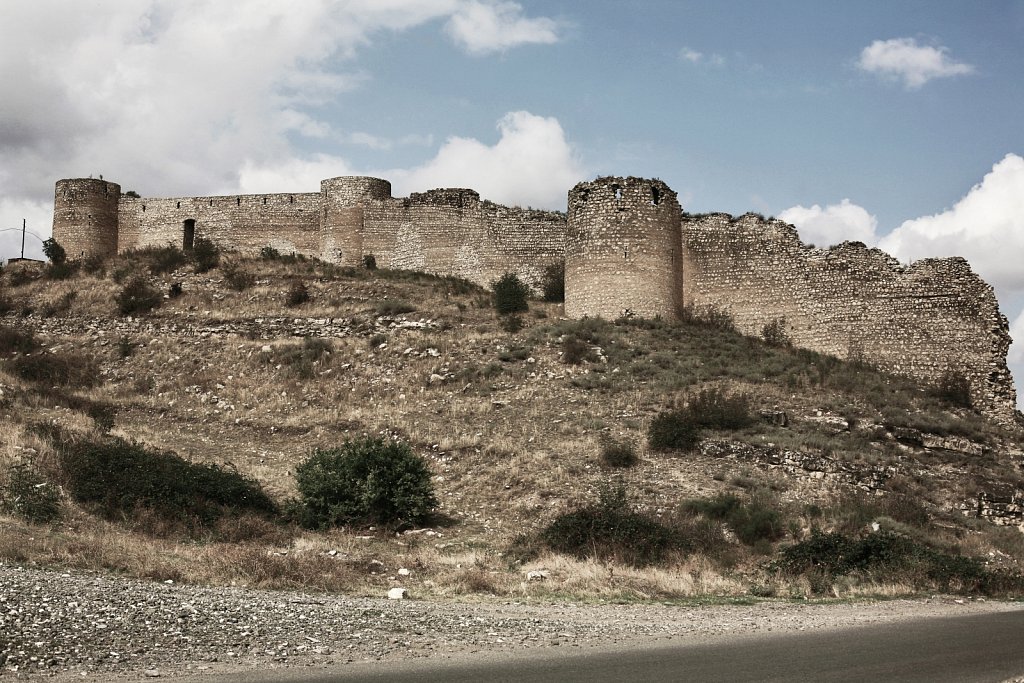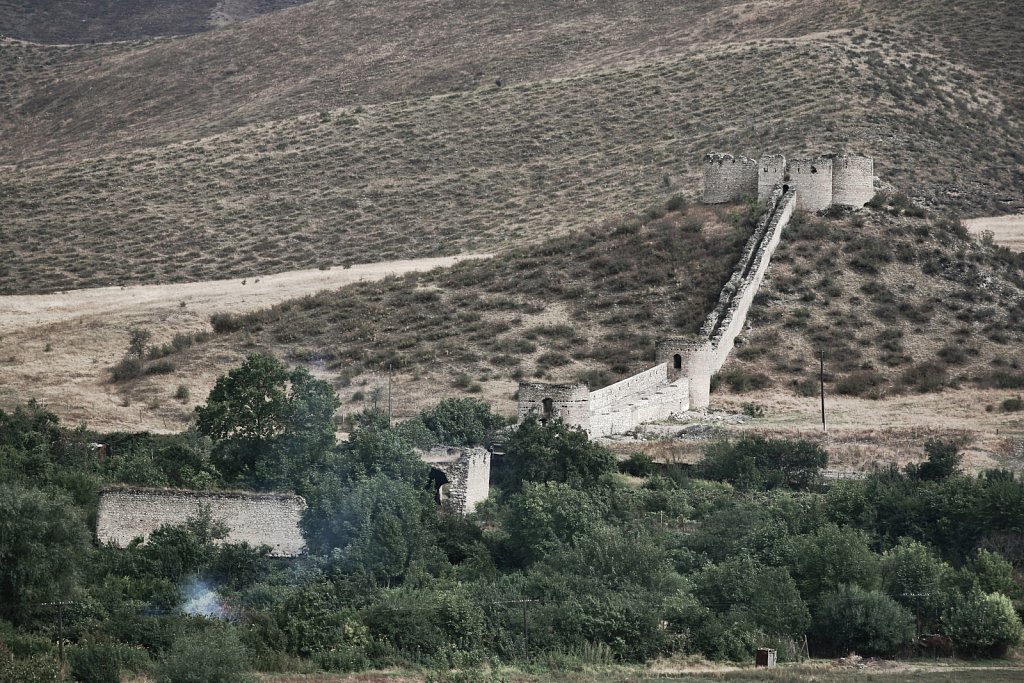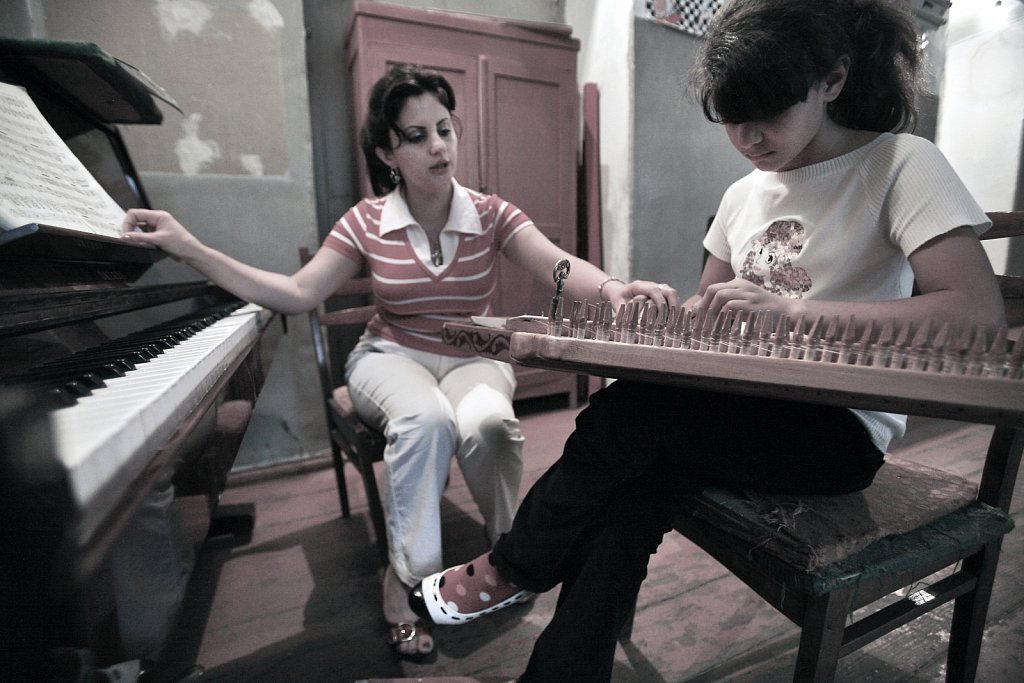
Nagorno-Karabakh
Teacher Nona Valerigna (age 33) gives instructions on kanun instrument, to her student Bella Gasparyan (age 10) during a school class in the Khomitas Musical School from Stepanakert. Besides learning the classical instruments, the pupils also learn how to play to traditional instruments like duduk, kanun, zurna, oud or saz. Stepanakert, Nagorno-Karabakh, 20 September 2008.
Nagorno-Karabakh
Student Bella Gasparyan (age 10) plays on kanun instrument during a school class in the Khomitas Musical School from Stepanakert. Besides learning the classical instruments, the pupils also learn how to play to traditional instruments like duduk, kanun, zurna, oud or saz. Stepanakert, Nagorno-Karabakh, 20 September 2008.
Nagorno-Karabakh
A group of girls plays on the gas tank in a residential district in the capital Stepanakert. With a population of 140.000, the majority being Armenians, Nagorno Karabakh Republic aims to achieve political and economical stability. The high unemployment rate, low salaries and the lack of opportunities for the youngsters make the unrecognized republic to be a hard place to live. Stepanakert, Nagorno-Karabakh, 20 September 2008.
Nagorno-Karabakh
A few women wait in a bus station downtown Stepanakert. With a population of 140.000, the majority being Armenians, Nagorno Karabakh Republic aims to achieve political and economical stability. The high unemployment rate, low salaries and the lack of opportunities for the youngsters make the unrecognized republic to be a hard place to live. Stepanakert, Nagorno-Karabakh, 20 September 2008.
Nagorno-Karabakh
A saleswoman cracks nuts in a food market in Stepanakert. With a population of 140.000, the majority being Armenians, Nagorno Karabakh Republic aims to achieve political and economical stability. The high unemployment rate, low salaries and the lack of opportunities for the youngsters make the unrecognized republic to be a hard place to live. Stepanakert, Nagorno-Karabakh, 20 September 2008.
Nagorno-Karabakh
A saleswoman makes "janghialov hats", a traditional dish made by a mix of 7-8 tipes of greens covered in dough, in a food market in Stepanakert. With a population of 140.000, the majority being Armenians, Nagorno Karabakh Republic aims to achieve political and economical stability. The high unemployment rate, low salaries and the lack of opportunities for the youngsters make the unrecognized republic to be a hard place to live. Stepanakert, Nagorno-Karabakh, 20 September 2008.
Nagorno-Karabakh
An old man carries woods on his donkey on a street in the village Vank, Martakert region. With a population of 140.000, the majority being Armenians, Nagorno Karabakh Republic aims to achieve political and economical stability. The high unemployment rate, low salaries and the lack of opportunities for the youngsters make the unrecognized republic to be a hard place to live. Village Vank, Martakert region, Nagorno-Karabakh, 20 September 2008.
Nagorno-Karabakh
Mayraberd Askeran Fortress (built in 1751) is situated in the town of Askeran, 14 km East from Stepanakert, the capital of Nagorno-Karabakh. It is located on the banks of the Qarqar River and was built by the Karabakh khanate ruler Panah Ali Khan and consists of two sections. The left-bank section features a double line of stone walls - 2m thick and 9m tall. The walls of this vanguard fort of Karkar valley stretch over 1.5km and during the Nagorno-Karabakh War, the fortress served as the military headquarters for Nagorno-Karabakh Armenians fighting against Azerbaijan. Askeran, Nagorno-Karabakh, 19 September 2008.
Nagorno-Karabakh
Mayraberd Askeran Fortress (built 1751) is situated in the town of Askeran, 14 km East from Stepanakert, the capital of Nagorno-Karabakh. It is located on the banks of the Qarqar River and was built by the Karabakh khanate ruler Panah Ali Khan and consists of two sections. The left-bank section features a double line of stone walls - 2m thick and 9m tall. The walls of this vanguard fort of Karkar valley stretch over 1.5km and during the Nagorno-Karabakh War, the fortress served as the military headquarters for Nagorno-Karabakh Armenians fighting against Azerbaijan. Askeran, Nagorno-Karabakh, 19 September 2008.
Nagorno-Karabakh
Mayraberd Askeran Fortress (built 1751) is situated in the town of Askeran, 14 km East from Stepanakert, the capital of Nagorno-Karabakh. It is located on the banks of the Qarqar River and was built by the Karabakh khanate ruler Panah Ali Khan and consists of two sections. The left-bank section features a double line of stone walls - 2m thick and 9m tall. The walls of this vanguard fort of Karkar valley stretch over 1.5km and during the Nagorno-Karabakh War, the fortress served as the military headquarters for Nagorno-Karabakh Armenians fighting against Azerbaijan. Askeran, Nagorno-Karabakh, 19 September 2008.
